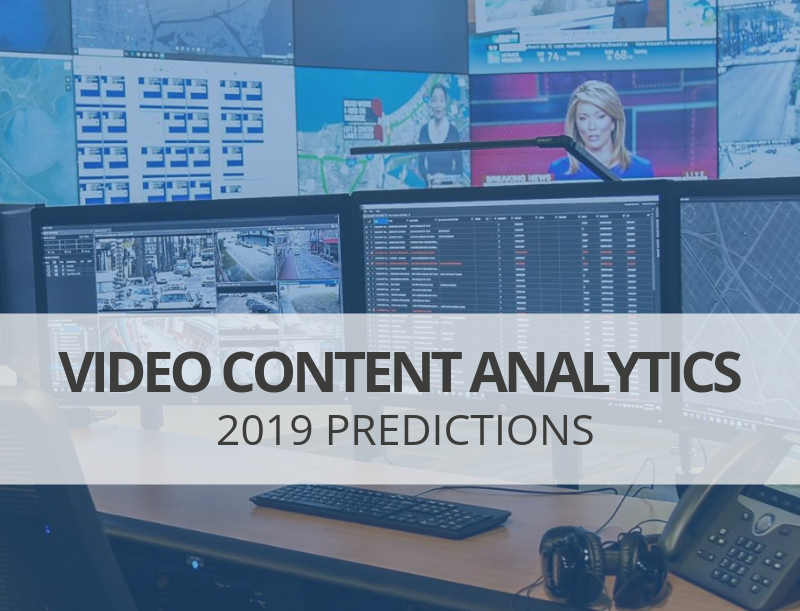2019 Video Analytics Predictions: What Can We Expect from VCA in 2019?

As the year comes to a close, it’s a great time to take stock of the trends that and developments that characterized 2018, while looking ahead to the coming year and predicting what we can expect from the video analytics industry in 2019.
In 2018, Video Content Analytics reached maturity – following the industry’s steady move towards more advanced and higher quality cameras, the market finally is ripe and ready for organizations to realize the full value of video surveillance investments. The growing sophistication of VCA systems combined with the market’s fuller understanding of the ways in which video analytics solutions can drive organizational efficiency and performance beyond security has resulted in businesses of all types taking a deeper interest in Video Content Analytics.
So what can we expect from VCA in 2019? Here are the top 3 trends we’re predicting for the video analytics industry in the year to come:
1. Transforming Video Content into Actionable Data
Video surveillance cameras and video footage are widely regarded as tools for security enablement, but, in 2019, video analytics will drive business performance beyond increasing security and supporting law enforcement. By incorporating artificial intelligence (AI) and Deep Learning capabilities, VCA technology can process video and structure data faster. With more data intelligence easily accessible, organizations of all types can harness the power of video – here are some examples:
- Retailers can leverage video data as business intelligence to:
- Maximize customer engagement with insight into consumer demographics, product interactions and store traffic data
- Optimize in-store navigation by visualizing trends and understanding how customers move throughout the space
- Reduce shrinkage, vandalism, and theft by cross referencing video data with conversion, inventory and security data
- Airports and transport hubs can utilize video intelligence to:
- Optimize security and operational efficiency by uncovering problem hotspots and identifying the causes of bottlenecks
- Maximize staff, vendor and product placements with quantifiable insight about traffic and visitor engagement trends
- Streamline response to suspicious behavior and emergencies by triggering real-time alerts about potential threats
- Smart Cities can leverage Video Content Analytics to:
- Uncover inefficiencies in the public transportation system and optimize transit schedules based on data-driven insights
- Identify where crosswalks, bike lanes or traffic lights could be placed to streamline citywide traffic
- Optimize the city’s operational management to encourage local tourism, commerce and resident satisfaction
2. Ready or Not, Face Recognition is Coming
With improved accuracy and increased adoption of face recognition solutions, the technology has become a heated discussion topic. While face recognition technology is already used extensively by mobile and social media applications, the lack of regulation and transparency surrounding its use, as well as the privacy concerns, have made video-based face recognition somewhat controversial.Nevertheless, the reality is that face recognition is here to stay: 2019 will see an increase in adoption as regulatory policy for its uses develops in tandem. This year, more law enforcement organizations will leverage video analytics technology with face recognition capabilities to accelerate investigations; retailers will utilize the technology to detect returning shoplifters and prevent recurring theft; airports are already using it for identification purposes – and more businesses are poised to leverage this capability in the year to come.
3. Accelerating the Adoption of Advanced Video Analytics
Video analytics technology has empowered organizations to maximize their video surveillance investments and optimize performance based on video intelligence. As organizations come to rely increasingly on video and expand their video resources, the need to conserve bandwidth is growing, driving a movement toward cloud migration and edge computing. Enabling more efficient processing of video data, these capabilities will continue to be developed and integrated into video analytics systems to increase their usability and efficiency for diverse applications.
As we look ahead to the potential developments on 2019, one thing is certain: the video surveillance and Video Content Analytics industries have taken off and are poised to soar in 2019. We at BriefCam are looking forward to following these trends, reporting and commenting on new developments and sharing our industry insight all year long.